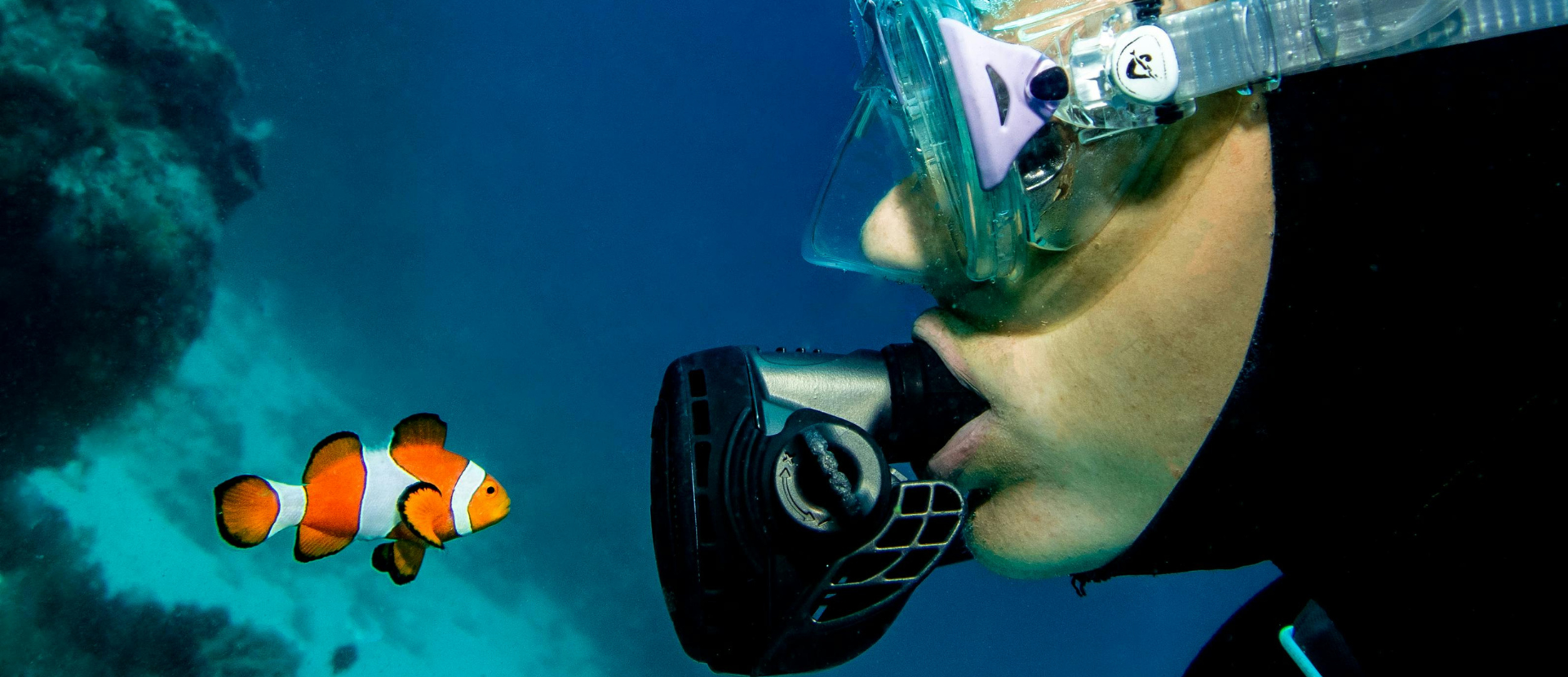- Science: Explained
How much plastic is in the Ocean? Depends who you ask.

Plastic is at the heart of Ocean Generation; it is OG’s OG.
Our founder Jo Ruxton MBE produced the award-winning documentary, A Plastic Ocean, and put plastic in the spotlight like never before. But it wasn’t just showing people that plastic was an issue, it was showing that we didn’t really understand the issue.
Nine years on, we’re taking a look at what we know (or don’t) about plastic now.
How much plastic is in the Ocean?
Somewhere between 0.13 million and 23 million tonnes of plastic enters our Ocean each year.
That’s quite a big range. Imagine your satnav saying your journey will take between 12 minutes and 2 weeks. Technically true, but not very helpful.
So, why is this question so complex to answer?
What are the estimates of plastic entering the Ocean?
Here’s what the scientific heavy hitters reckon:
- Jambeck et al. (2015): 5-13 million tonnes annually
- Lebreton et al. (2017): 1.2-2.4 million tonnes*
- Meijer et al. (2021): 0.8-2.7 million tonnes*
- Borrelle et al. (2020): 19-23 million tonnes†
- Zhang et al. (2023): 0.70 million tonnes (95% confidence: 0.13-3.8 million tonnes)
*riverine emissions only
† all aquatic environments
And then there’s OECD (2022): they predict that by 2060, 44 million tonnes of plastic will enter the Ocean each year.
That’s a 30-fold difference between lowest and highest estimates.

Why are the plastic in the Ocean numbers so different?
Let’s visualise this better. Instead of trying to calculate the amount of plastic entering the Ocean, imagine that we’re trying to calculate the amount of popcorn falling on cinema floors.
Picture scientists trying to measure how much popcorn hits cinema floors for each film watched. Sounds simple? How would you tackle that?
To compare this with our plastics range, our estimates could be 50kg to 1,500kg of popcorn annually.
Here’s how different research teams tackle the popcorn problem:
The Jambeck Method: Cinema-Goer Profiling
Jambeck starts with the approximate number of people that go to the cinema. Then, she would factor in roughly how much popcorn each person would have and the “messy eater” rates, to get an estimate for how much popcorn ends up on the floor.
The Lebreton/Meijer Method: Aisle Monitoring
These researchers use data from observation. Actually going to cinema aisles and collecting the popcorn.
They look at how much popcorn a group of people drop during a movie. Then, they predict how much would be dropped by all moviegoers. Meijer took the method further by visiting more cinemas.
The Borrelle Method: Cinema Stocktake
This method looks at the number of kernels purchased by cinemas. Using this as a base, they can predict how much gets sold to customers and predict how much will be spilled or dropped during handling and eating.
This gives the amount present in cup holders, the floor of the lobby and hallway, as well as the cinema screen floor, so the numbers will be a bit higher.
The Zhang Method: Simulated Screenings
Create a computer model predicting how much popcorn is dropped throughout the cinema. Go and check down the back of specific seats and compare the amount of popcorn found with the amount the model predicted would be there. Adjust and validate the model in line with the findings.
The OECD Method: Future Spill Forecaster
It predicts how messy cinemas will be in 2060 based on rising ticket sales and supersized buckets.

What do the studies about assessing how much plastic is in the Ocean do differently?
Each method tackles different bits of the popcorn (plastic) pipeline (the stages where popcorn (plastic) might be spilled on the floor). No wonder their estimates vary wildly.
Bottom-up studies (like Jambeck and Borrelle) start with waste on land and model Ocean inputs. Top-down studies (like Lebreton, Meijer, or Zhang) start with plastic actually observed in seawater and work backwards to estimate how much is entering the Ocean. Like comparing cinema managers’ spillage predictions with cleaners’ floor surveys.
Interestingly, the bottom-up studies predict consistently higher plastic in the Ocean than studies using observed data. To use our analogy again: these studies might be overestimating how messy cinema goers are and so end up predicting too much popcorn on the floor.
Plus, these studies use different years for their data. Jambeck is using data from 2010, while Borelle is using 2016 data. The data at the basis of their work is quite different.
Are we counting all plastic that enters the Ocean?
To show how much we don’t know, a new study (July 2025) has highlighted nano-plastics. Nano-plastics are smaller than 1 µm, which is tiny. It is 1/75th of the width of your hair. Or – if you scaled a metre up to the size of a football pitch, a micrometre would be the width of your hair. Their size means they are very difficult to study.
There has been debate that they can even exist, as it requires a lot of energy to break plastics up to that extent.
This new paper from ten Hietbrink et al (2025) found nano-plastics from PET, PS and PVC (look at this table for the plastic acronyms) everywhere they studied across the north Atlantic.
The amount of nano-plastics they found are comparable to macro and micro-plastic, meaning we are missing a big piece of the plastic puzzle. If this study is accurate, it suggests nano-plastics make up 90% of the plastics in the Ocean by weight, compared to macro- and microplastic estimates. Turns out, our popcorn is shedding a lot of salt on the floor that we haven’t been thinking about.
Interestingly, the paper also highlighted the lack of nano-plastics from PE or PP sources. This could suggest a removal pathway or breakdown process we aren’t aware of yet (which is really interesting). It serves as a reminder that we don’t have the whole picture here. Who knows, maybe there are some ants eating some of the popcorn crumbs?

How much plastic is produced each year?
For context, let’s look at the changes in plastic production over this time:
| Year | Estimated Production | Source & Notes |
| 2010 | ~270 million tonnes | PlasticsEurope (2011 report); includes thermoplastics, polyurethanes, thermosets, adhesives, coatings, sealants, and PP-fibres |
| 2016 | ~335 million tonnes | PlasticsEurope (2017); reflects continued growth in Asia, especially China. |
| 2024 | ~460 million tonnes | Based on extrapolation from OECD and UNEP trends; global plastic production is increasing at ~4% annually. |
Plastic production has increased by approximately 200 million tonnes over the past 15 years. This we can say with more confidence – we know how much we produce.
What do we know about the amount of plastic in the Ocean?
The Knowns:
- Plastic is accumulating in the Ocean
- The problem is growing – plastic production has doubled since 2000
- Rivers are major transport pathways of plastic
- Areas with poor waste management and high consumption of single use plastic have higher leakage to the environment
- Fishing gear (as pollution) dominates remote Ocean areas, much land-based plastic remains close to shore
- Most plastic never reaches the Ocean
- We want to avoid more plastic entering the Ocean
The Unknowns:
- Exactly how much plastic enters the Ocean
- Exact source breakdowns by region
- How much plastic is already out there in the natural environment
Do the unknowns stop the need for action?

What can we do about plastic pollution?
Recent studies are showing that plastic pollution tends to stay in our coastal areas. Currents, winds and tides push plastic back against the coast. Why is this good? Because it makes it easy to clear up! It means that beach cleans are in fact a really useful tool to fight plastic pollution.
Going back to our analogy: When the popcorn stays close to our seat, it’s easy to get it off the floor again. And if everyone picks some up before it gets stamped into popcorn dust, it is much easier.
We don’t know exactly how much plastic is in the Ocean. However…
Science isn’t about having all answers immediately – it’s about getting better answers over time. Does it really matter if 0.13 million or 12 million tonnes of plastic enter the Ocean annually?
The scale of the problem might be debated, but the need to act isn’t. Plastic in any amount is detrimental to the world we inhabit.
While scientists debate over the amount of zeros, solutions remain largely the same: better waste management, smarter materials, improved recycling, reduced single-use plastics, and better fishing gear recovery.
The uncertainty isn’t paralysing – it’s liberating. We don’t need perfect numbers to start fixing the problem. We just need to start.
Each of us can reduce the amount of popcorn on the floor. By consciously buying less plastic you not only reduce plastic waste production but also signal to companies that less plastic is a customer preference.
Picking up plastic from the beach will stop it being broken up by the waves, producing microplastics and nano-plastics, making the problem harder to solve.
The little things matter. The big numbers don’t change the picture.





